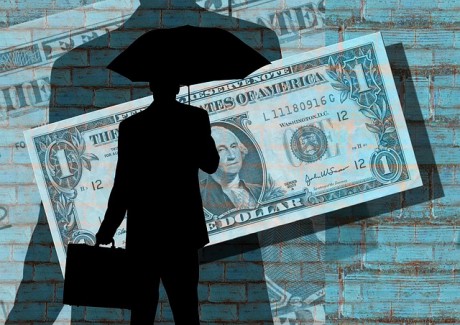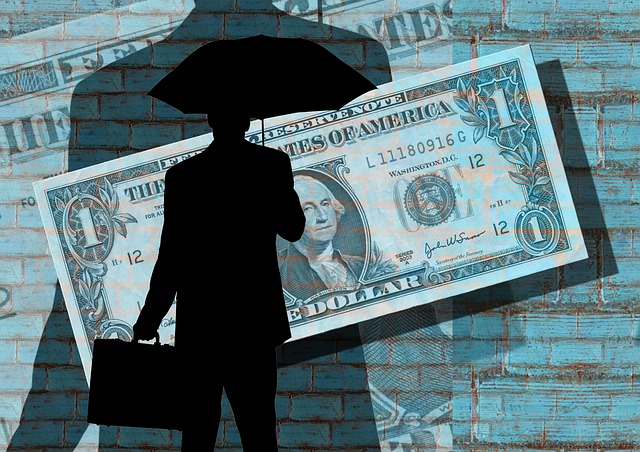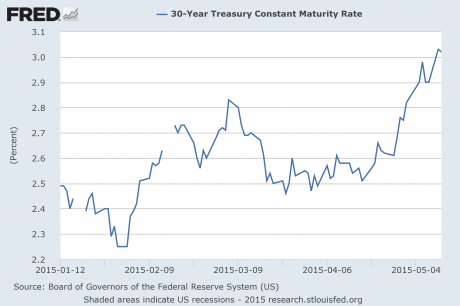 Some really weird things are happening in the financial world right now. If you go back to 2008, there was lots of turmoil bubbling just underneath the surface during the months leading up to the great stock market crash in the second half of that year. When Lehman Brothers finally did collapse, it was a total shock to most of the planet, but we later learned that their problems had been growing for a long time. I believe that we are in a similar period right now, and the second half of this year promises to be quite chaotic. Apparently, those that run some of the largest exchange-traded funds in the entire world agree with me, because as you will see below they are quietly preparing for a “liquidity crisis” and a “market meltdown”. About a month ago, I warned of an emerging “liquidity squeeze“, and now analysts all over the financial industry are talking about it. Could it be possible that the next great financial crisis is right around the corner?
Some really weird things are happening in the financial world right now. If you go back to 2008, there was lots of turmoil bubbling just underneath the surface during the months leading up to the great stock market crash in the second half of that year. When Lehman Brothers finally did collapse, it was a total shock to most of the planet, but we later learned that their problems had been growing for a long time. I believe that we are in a similar period right now, and the second half of this year promises to be quite chaotic. Apparently, those that run some of the largest exchange-traded funds in the entire world agree with me, because as you will see below they are quietly preparing for a “liquidity crisis” and a “market meltdown”. About a month ago, I warned of an emerging “liquidity squeeze“, and now analysts all over the financial industry are talking about it. Could it be possible that the next great financial crisis is right around the corner?
According to Reuters, the companies that run some of the largest exchange-traded funds in existence are deeply concerned about what a lack of liquidity would mean for them during the next financial crash. So right now they are quietly “bolstering bank credit lines” so that they will be better positioned for “a market meltdown”…
The biggest providers of exchange-traded funds, which have been funneling billions of investor dollars into some little-traded corners of the bond market, are bolstering bank credit lines for cash to tap in the event of a market meltdown.
Vanguard Group, Guggenheim Investments and First Trust are among U.S. fund companies that have lined up new bank guarantees or expanded ones they already had, recent company filings show.
The measures come as the Federal Reserve and other U.S. regulators express concern about the ability of fund managers to withstand a wave of investor redemptions in the event of another financial crisis. They have pointed particularly to fixed-income ETFs, which tend to track less liquid markets such as high yield corporate bonds or bank loans.
So why are Vanguard Group, Guggenheim Investments and First Trust all making these kinds of preparations right now?
Do they know something that the rest of us do not?
Over recent months, I have been writing about how so many of the exact same patterns that we witnessed just prior to previous financial crashes seem to be repeating once again in 2015.
One of the things that we would expect to see happen just before a major event would be for the “smart money” to rush out of long-term bonds and into short-term bonds and other more liquid assets. This is something that had not been happening, but during the past couple of weeks there has been a major change. All of a sudden, long-term yields have been spiking dramatically. The following comes from Martin Armstrong…
The amount of cash rushing around on the short-end is stunning. Yields are collapsing into negative territory and this is the same flight to quality we began to see at the peak in the crisis back in 2009. The big money is selling the 10 year or greater paper and everyone is rushing into the short-term. There is not enough paper around to satisfy the demands. Capital is unwilling to hold long-term even the 10 year maturities of governments including Germany. This is illustrating the crisis that is unfolding and there is a collapse in liquidity.
There is that word “liquidity” once again. It is funny how that keeps popping up.
Here is a chart that shows what has been happening to the yield on 30 year U.S. Treasuries in 2015. As you can see, there has been a big move recently…
And what this chart doesn’t show is that the yield on 30 year Treasuries shot up to about 3.08% on Wednesday.
Of course it isn’t just yields in the U.S. that are skyrocketing. This is happening all over the globe, and many analysts are now openly wondering if the 76 trillion dollar global bond bubble is finally imploding. For instance, just consider what Deutsche Bank strategist Jim Reid recently told the Telegraph…
Financial regulations introduced since the crisis have required banks to hold more bonds, as quantitative easing schemes have meant central banks hold many on their own balance sheets, reducing the number available to trade on the open market.
Simultaneously, central banks have attempted to boost so-called “high money liquidity” with quantitative easing schemes and their close to zero interest rates. “What has become increasingly clear over the last couple of years is that the combination of high money liquidity and low trading liquidity creates air pockets,” said Mr Reid.
He continued: “It’s a worry that these events are occurring in relatively upbeat markets. I can’t helping thinking that when the next downturn hits the lack of liquidity in various markets is going to be chaotic. These increasingly regular liquidity issues we’re seeing might be a mild dress rehearsal.”
Those are sobering words.
And without a doubt, we are in the midst of a massive stock market bubble as well. The chaos that is coming is not just going to affect bonds. In fact, I believe that the greatest stock market crash in U.S. history is coming.
So when will it happen?
Well, Phoenix Capital Research seems to think that we have reached an extremely important turning point…
This is something of a last hurrah for stocks. We are now officially in May. And historically the period from May to November has been one of the worst periods for stocks from a seasonal perspective.
Moreover, the fundamentals are worsening dramatically for the markets. By the look of things, 2014 represented the first year in which corporate sales FELL since 2009. Sales track actual economic activity much more closely than earnings: either the money comes in or it isn’t. The fact that sales are falling indicates the economy is rolling over and the “recovery” has ended.
Having cut costs to the bone and issued debt to buyback shares, we are likely at peak earnings as well. Thus far 90% of companies in the S&P 500 have reported earnings. Year over year earnings are down 11.9%.
So sales are falling and earnings are falling… at a time when stocks are so overvalued that even the Fed admits it. This has all the makings of a serious market collapse. And smart investors are preparing now BEFORE it hits.
Personally, I have a really bad feeling about the second half of 2015. Everything seems to be gearing up for a repeat of 2008 (or even worse). Let’s hope that does not happen, but let’s not be willingly blind to the great storm on the horizon either.
And once the next great crisis does hit us, governments around the world will have a lot less “ammunition” to fight it than the last time around. For example, the U.S. national debt has approximately doubled since the beginning of the last recession, and the Federal Reserve has already pushed interest rates down as far as they can. Similar things could also be said about other governments all over the planet. This is something that HSBC chief economist Stephen King recently pointed out in a 17 page report entitled “The world economy’s titanic problem”. The following is a brief excerpt from that report…
“Whereas previous recoveries have enabled monetary and fiscal policymakers to replenish their ammunition, this recovery — both in the US and elsewhere — has been distinguished by a persistent munitions shortage. This is a major problem. In all recessions since the 1970s, the US Fed funds rate has fallen by a minimum of 5 percentage points. That kind of traditional stimulus is now completely ruled out.”
For a long time, I have had a practice of ending my articles by urging people to get prepared. But now time for preparing is rapidly running out. My new book entitled “Get Prepared Now” was just released, but honestly my co-author and I should have had it out last year. In the very small amount of time that we have left before the financial markets crash, the amount of “prepping” that people are going to be able to do will be fairly limited.
I am not just pointing to a single event. Once the financial markets crash this time, I believe that there is not going to be any sort of a “recovery” like we experienced after 2008. I believe that the long-term economic collapse that we have been experiencing will accelerate very greatly, and it will usher in a horrible period of time for the United States unlike anything that we have ever seen before.
So what do you think?
Could I be wrong?
Please feel free to share your thoughts by posting a comment below…



